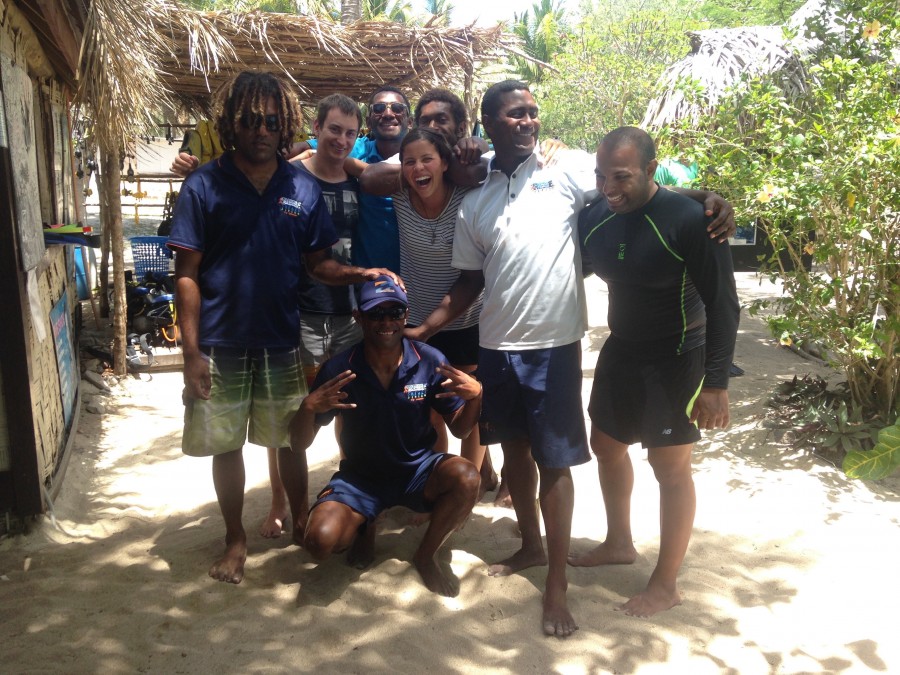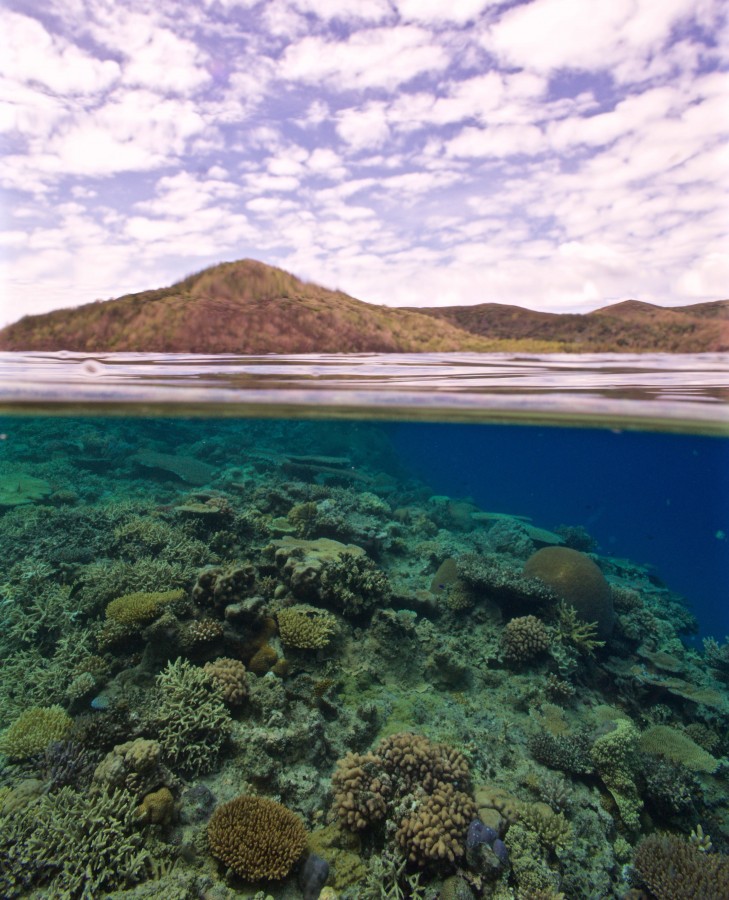After a good night’s rest at my hostel, I was up bright and early to catch the bus to Port Denarau, where I’d be boarding a catamaran to take me to my new home for the next week. After I learned I would be ending the Lindblad trip in Fiji, I spoke with Ben, who had spent 6 weeks in Fiji, and got in touch with Barefoot Manta, a resort in the Yasawa island chain that is implementing a variety of marine conservation programs into their business. I really didn’t know what to expect but thought, “heck, if the place is called Barefoot Manta, I have to like it. I love being barefoot!” After making it to the port, I checked in and got my tickets for the catamaran, then loaded up, excited for the adventure ahead. After a 3 hour ride, I had made it to Drawaqa island, where the Barefoot Manta resort is located. I was blown away by how beautiful the little island was and shuttled from the catamaran to the resort’s boat. It was a quick little cruise to the shore, where we were greeted by staff singing a welcome song.
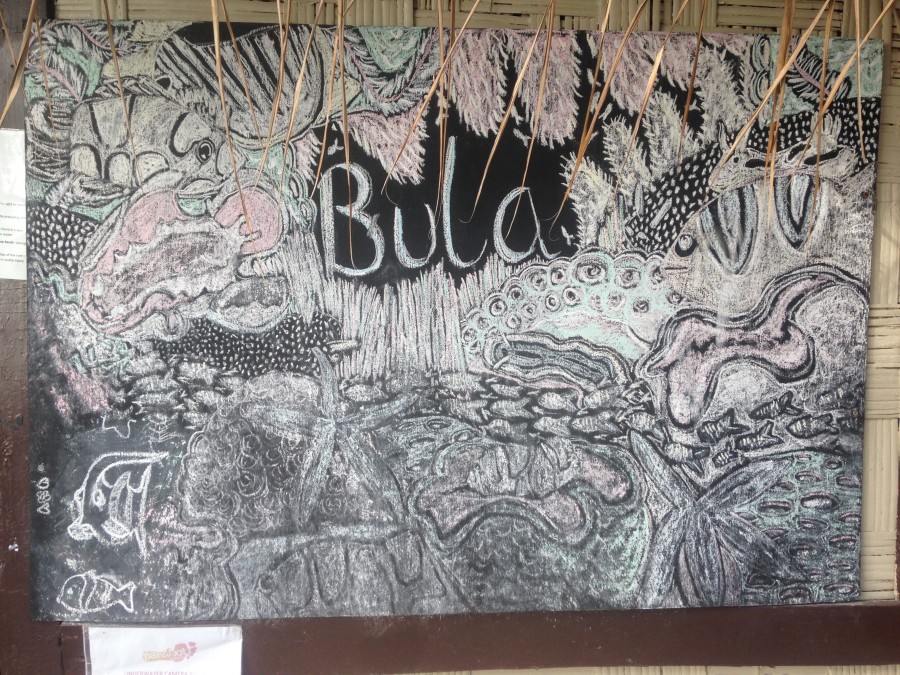
We were given a tour around the island and introduced to various staff before sitting down to sign some papers and drop our bags off in our bures. After a delicious lunch, I made my way to the small dive shop, where I met Heather, one of the managers, who jumped right into explaining how the next week or so would work. The reason I decided to spend the week with Barefoot Manta is because they combine their dive tourism with marine conservation projects. They work in conjunction with a volunteer group called Vinaka Fiji and have volunteers come for any length of time to work with either education, marine conservation, or sustainability. My area of interest was the marine conservation volunteers, so I’d basically spend the week acting as a volunteer, participating in all the projects that the volunteers do. Heather explained all this to me, as well as going over the variety of projects they currently have underway. The biggest is the removal of Crown of Thorn seastars (COTS) from reefs around the island.
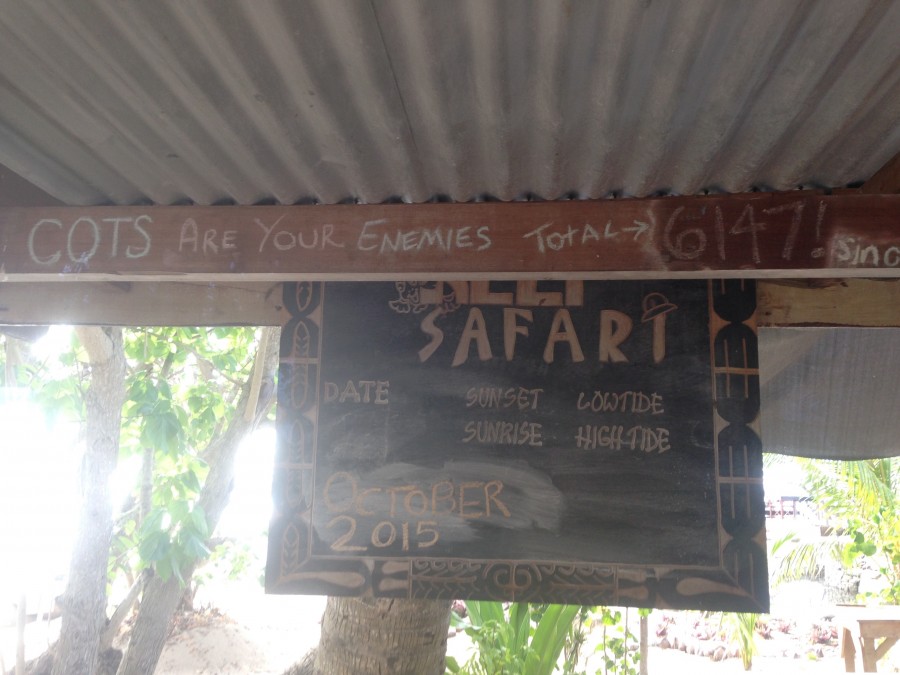
They also have recently started a clam nursery to reintroduce giant clams to Fijian waters, plus coral planting and fish surveys. After my chat with Heather, I was introduced to the rest of the dive crew: Lai, Bruce, Paul, Semmy, and Dan. After meeting the guys, I knew I was in for a week of fun. I also had the chance to meet the other marine volunteers, Tobias and Florian, who had both been on the island for a few weeks already. I was invited to tag along on the dive to clean the juvenile clams, which was a shallow shore dive from the resort. I jumped at the chance, and after Dan explained to me how it’s done, I hopped in the water with Semmy, who led me to the nursery and we got down to business. All you do is brush the algae off the shell with a toothbrush, but you have to make sure you don’t damaged the vulnerable mantle. Once all 30 or so clams were brushed and looking clean, we placed them back into their cage and surfaced. The rest of the afternoon I spent getting to know the volunteers and dive crew, then sat and watched the daily game of volleyball. Although hours earlier that day I had no idea what to expect for my next week, I was now beginning to see that it was going to be a fun adventure in Fiji!
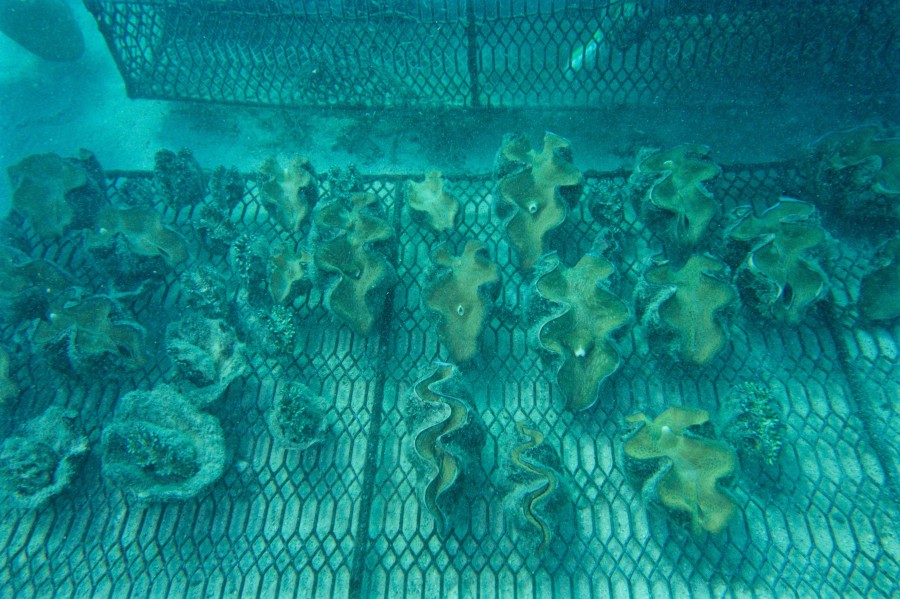
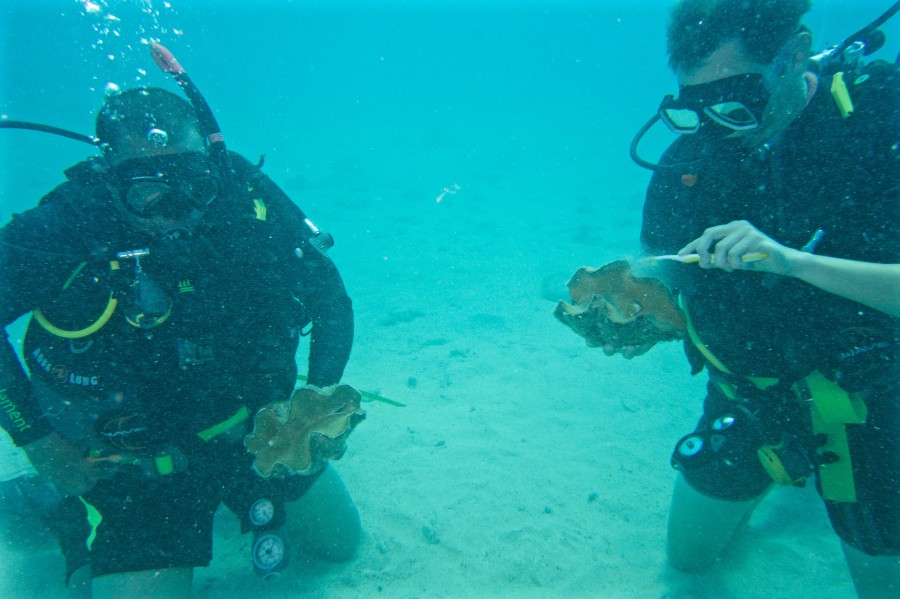
Wednesday I woke up bright and early for a morning hike before heading down to breakfast with the other volunteers. We then walked over to the dive shop for the daily meeting at 8 am, where the plan for the day was announced. We’d start the morning with a COT dive, then spend the afternoon doing some surveys on the reef. I’d never personally removed COTS from a reef and I was nervous and excited. While removing these creatures was a good way of protecting the corals from being completely consumed, you have to be incredibly careful because the COTS are covered in venomous spines that will cause massive swelling and pain if you get stung. Dan showed me the technique they used to remove the seastars, which was basic yet effective. You have a piece of rebar with a bend in one end and work it under the belly of the COT, then slowly lift up off the coral, placing it into the burlap bag you carry. We loaded the boat up with all the gear and headed out to the reef.
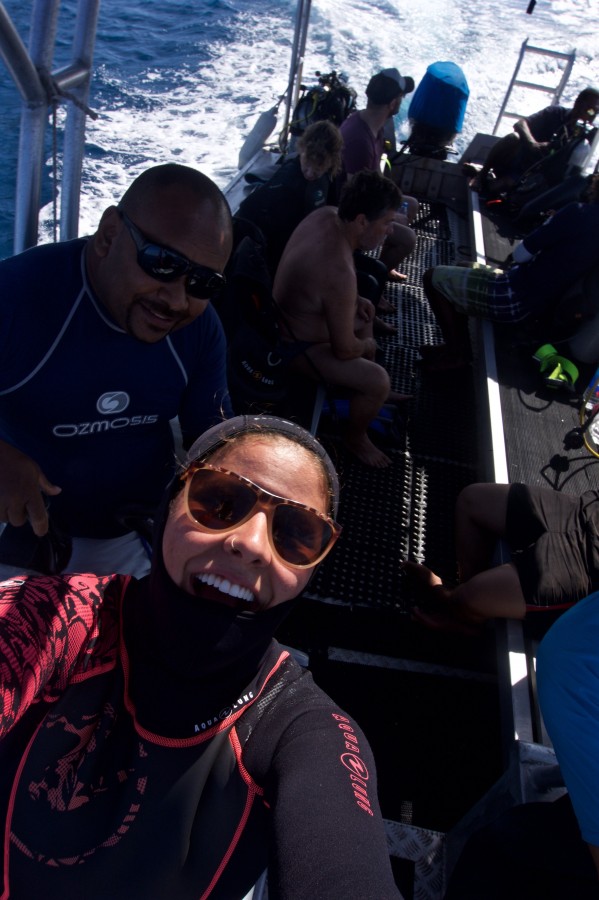
I was so excited to be trying something new! The majority of the dive we actually saw no COTS (which is a good thing!) but towards the very end there were a few juvenile COTS that gave me a good chance to practice my removal skills. It was actually easier than I was expecting it to be (but maybe that was because I was removing such small COTS) but either way, it was good to finally give it a try. Upon finishing the dive we motored back to the resort, where we measured the diameter of each COT (for aging purposes) and recorded the data. Lunch was served a short while later and after eating, we headed back to the shop to see what the afternoon had in store. It was decided that for the afternoon we’d tag along with the boat going out with guests to do a sea cucumber count on a local reef. Sea cucumbers are a huge industry in Fiji, but it is largely unregulated and little is known about the sea cucumber population of the area, so Barefoot Manta has started conducting counts to get a better idea of the populations around the area. We spent the dive scanning for the sea cucumbers, and then recorded our counts back at the dive shop. While the daily volleyball match was going on, I DJ’ed for the teams, then cleaned up for dinner and had another nice, early night.

Thursday after my morning hike and breakfast, we had our usual dive meeting for the day. It was decided that we’d spend the morning doing a COT collection dive at a site known as Alcatraz, where they had an outbreak several months ago and were still trying to get the last stragglers off the reef. We loaded the boat up with our gear and headed out. It was all crew and volunteers this dive and we were quickly in the water, scanning the corals for signs of the ravenous COTS. Right at the beginning I found a massive COT, but the rest of the dive was absolutely quiet, with not many to be seen. It was good to know that they removal of the COTS was effective for the local reefs! Back at the shop we measured and recorded the diameters of all the collected COTS before burying them in the sand.
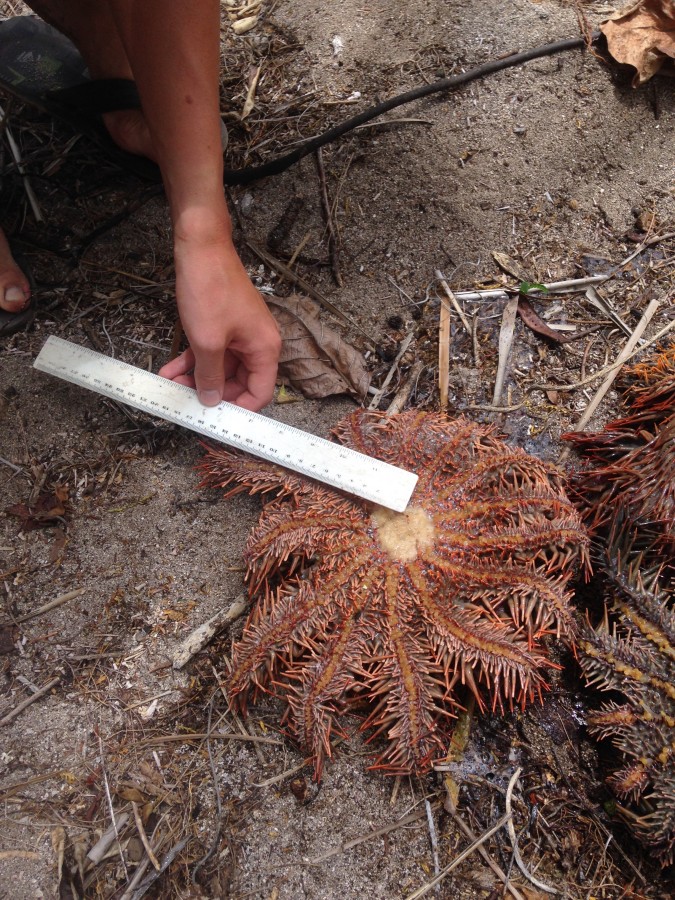
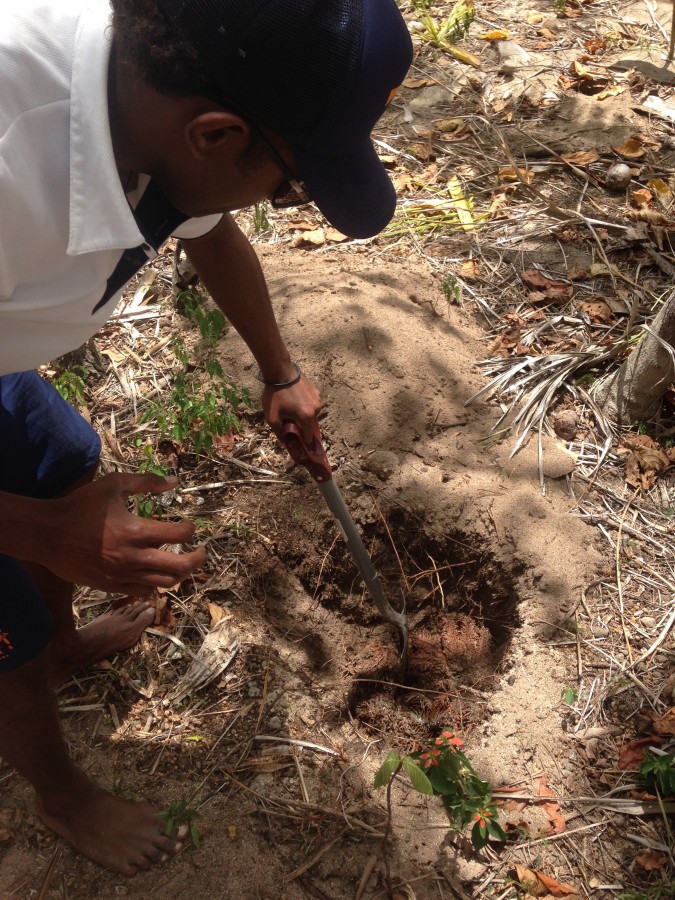
After lunch, Dan and Heather decided that we’d spend the afternoon planting coral. Dan explained how exactly to “sew” the coral branches onto the cement base with fishing line, which would give it a stable platform to grow from. For the dive we’d need a lot of tools: fishing line, the cement bases, zip ties, cutters, toothbrushes, and gloves (to protect the corals from bacteria on our hands). We finned over to the spot where all the coral branches were perched on a large wire grid. We kneeled down before the coral pieces and began snapping branches off to tie to the cement bases. Never have I felt so bad about helping coral. My whole diving career I stick to the strict idea of not touching coral, and here I am, snapping coral branches left and right! But these transplants will be used to help start new reefs, so it’s for a good cause. It was quite difficult to get the branches tied securely to the bases, as I quickly came to learn. They are rarely perfectly flat or symmetrical, making them prone to lean or tip off the base. After several frustrating first attempts, I slowly started to get the hang of getting the corals securely tied to their bases. After an hour or so of tying, then cleaning algae off the grid, we headed back for shore. After hanging out at the dive shop for the rest of the afternoon, I was convinced to join in on the game of volleyball for that evening. It was made blindingly clear to everyone that volleyball was not a sport I excelled at, but I still had a blast attempting to play.
Friday started with another COT dive at a site called Botiara, which is not visited very often, so it was due for a check up. It was all crew and volunteers that headed out again and we managed to find quite a few COTS on the reef (around 30). It was my first dive where we actually spent most of the time finding and removing COTS and I realized that I quite enjoyed hunting down the seastars on the reef. After a successful dive removing COTS, we headed back to the shop where as always, the COTS were measured then buried to be properly disposed of.
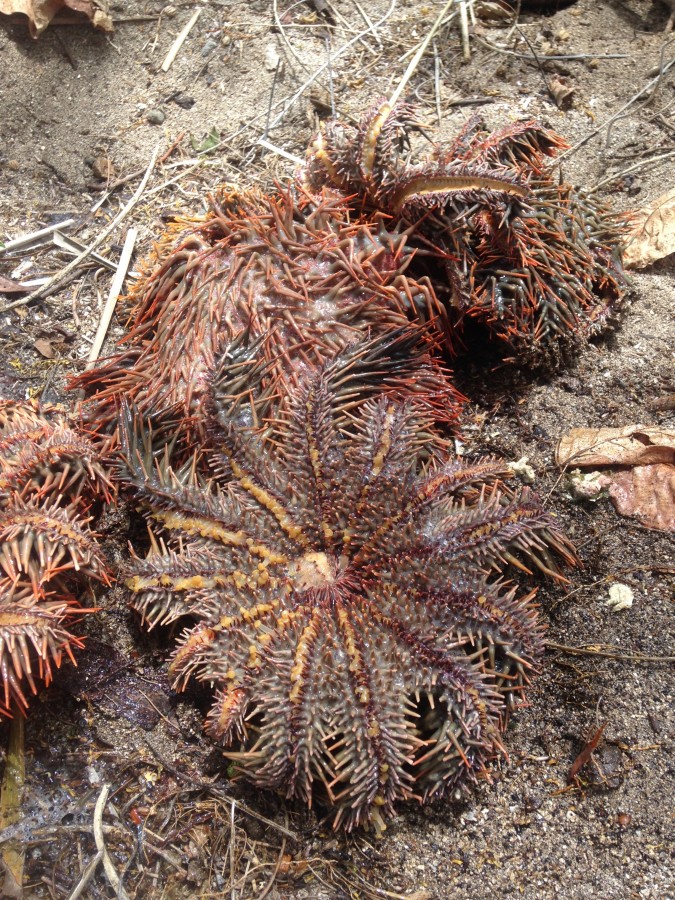
After lunch, we had an unusual task for the afternoon. Dan and Heather had acquired a pair of data loggers that they wanted to insert in two different locations for better data collection during manta season. After some deliberation, it was decided that one logger would be placed in Manta Channel, the passage between two islands where mantas aggregate from May to October to feed and relax before heading out. Manta Channel is a largely popular spot during manta season as you can snorkel with the gentle giants. However, Barefoot Manta is trying to get more regulations put in place to provide a safer experience for not only the snorklers, but the mantas themselves, and thorough data collection will play a large part in getting more effective regulations in place. We loaded the boat with our dive gear and headed out to a small island northwest of Drawaqa, where one logger would be placed to get water temperature recordings from further offshore.
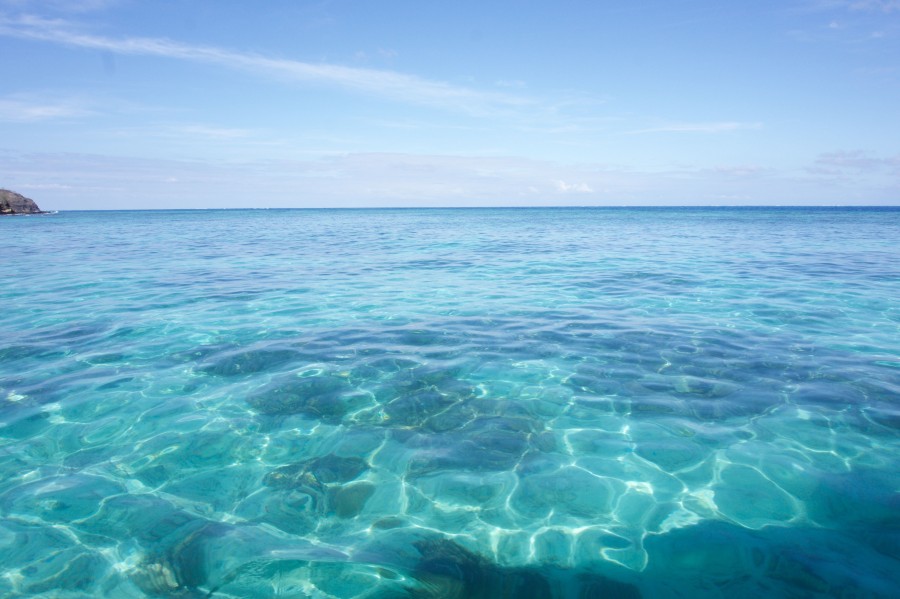
None of us knew what to expect for the reef, as the small island is rarely visited. Upon jumping in, we found crystal clear waters and a nice little reef around the island. We placed the data logger on a cement block in a spot that’d be easily found again, then spent another 20 minutes or so swimming around the reef, seeing what we could find. We then popped up, loaded back into the boat and cruised over to Manta Channel, where we jumped quickly in the water with the second logger and placed it right by the cleaning station in the middle of the channel. We zipped along with the current and after a short 10 minutes surfaced from the dive. It was nice to see some new spots, especially one that never gets visited! The day finished with another fun game of volleyball and dinner.
Saturday I had the morning free to do a fun dive with some dive guests and Paul, one of the guides. We headed to a site known as Fantastic Wall, which is a gorgeous wall dive covered in hard and soft corals. It was weird to be doing a fun dive with no mission to accomplish, but we saw a bunch of cool critters (including 2 octopus and 2 turtles).
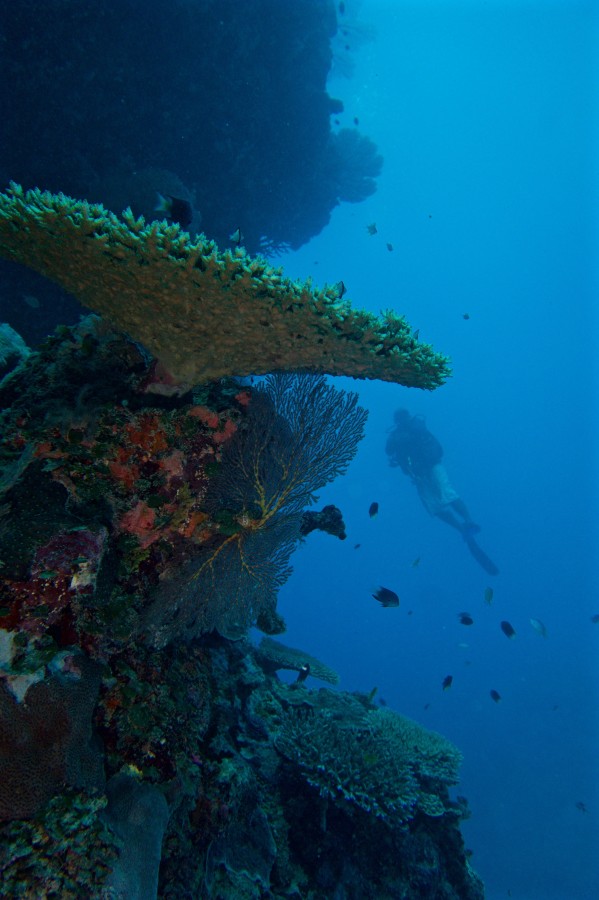
After lunch, Heather gathered us to see if we wanted to spend the afternoon planting mangrove transplants in the nearby village of Kese. I jumped at the chance to participate in another conservation project, even though it didn’t involve diving. Kese is a local village on a nearby island with a river that runs from inland to the ocean. This river used to be bordered by mangroves, but the villagers removed the mangroves from a large portion of the mouth of the river, which led to rapid erosion of the sand around the mouth and is now a problem for the houses close to the river’s edge. Barefoot Manta has begun a mangrove transplant program to re-establish the mangrove population that maintains the soil structure around the river’s edge. All that this particular project entails is collecting mangrove propagules that get washed up onshore, planting them in the small garden behind the dive shop, then once they have reached a certain stage in growth, they can be uprooted and replanted in Kese along the river.
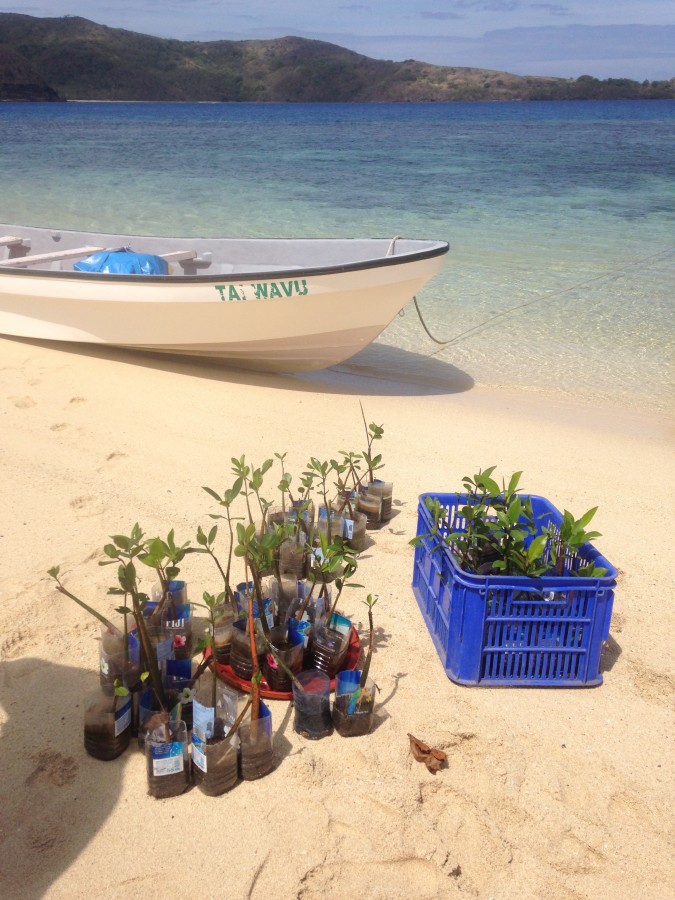
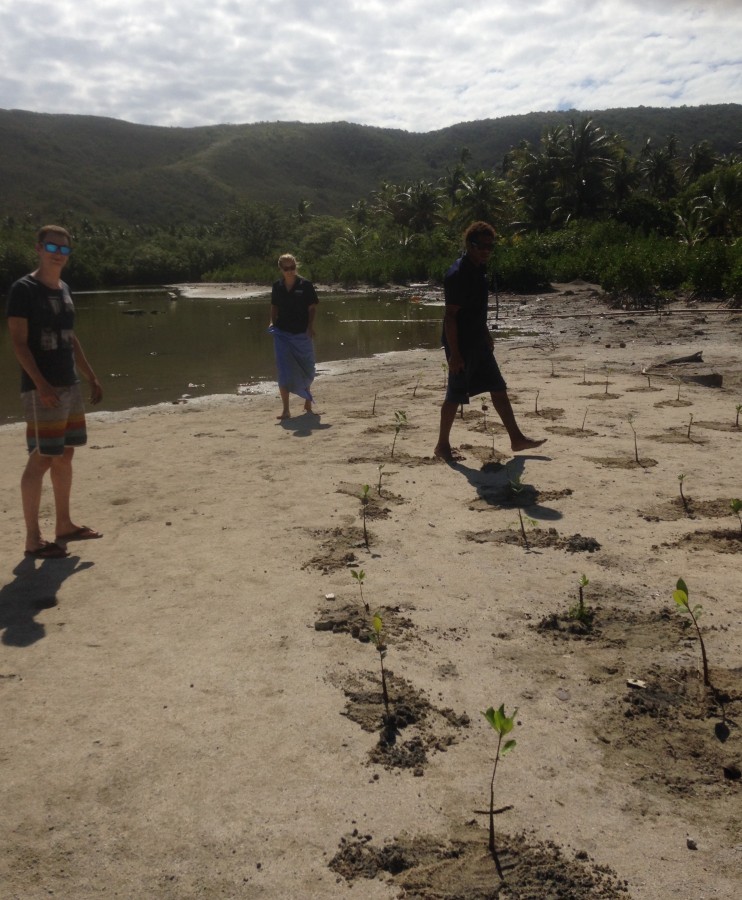
The only issue with this project is that there is a very low survival rate with the mangroves (around 10%) which means progress moves very slowly. However, Dan and Heather don’t let that discourage them and every few weeks or months they head over to Kese with a few dozen propagules ready to be planted. Sometimes even locals come down to help them plant, and it’s encouraging to see the community being interested and engaged. We loaded our boat with about 80 propagules and made our way over to Kese with Dan, Heather, Tobias, Semi and myself. We got straight to planting and got each mangrove sprout firmly located in their new home along the river’s edge. We then had some time to sit and relax under a coconut tree as we waited for our ride to come back and pick us up. It was a fun afternoon in Kese, with the local children coming to play around us and my feeble attempts to climb a coconut tree keeping everyone entertained.
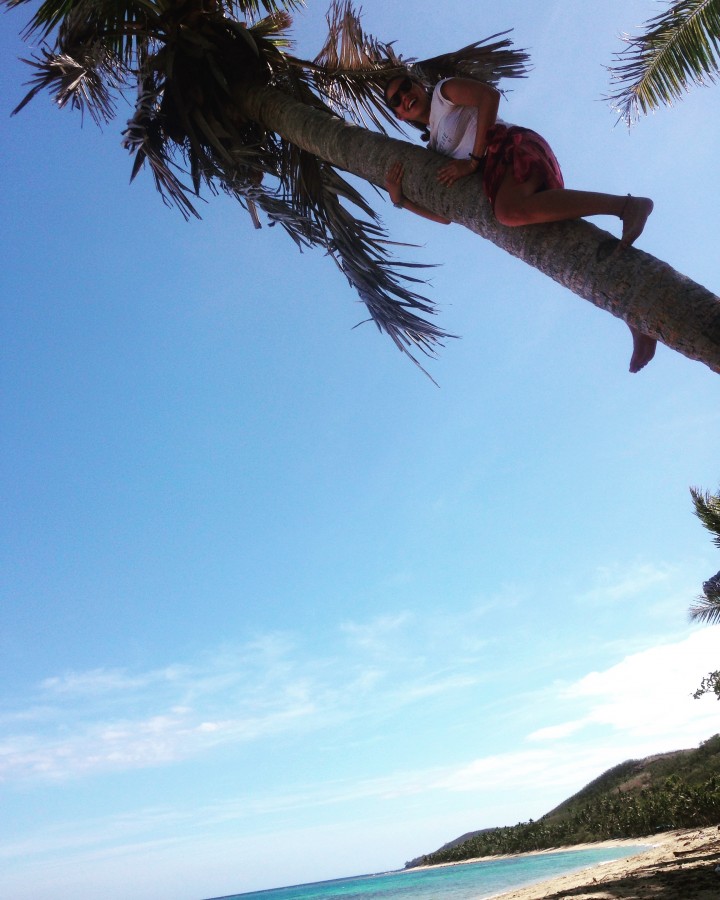
Sunday is the day off for volunteers so we had no projects to work on that day. I tagged along in the morning for a fun dive with Paul and some guests, who were headed to a site called Caves of Babylon. It was a neat cavern dive that reminded me of a site in Palau I used to take guests to, known as Blue Holes.
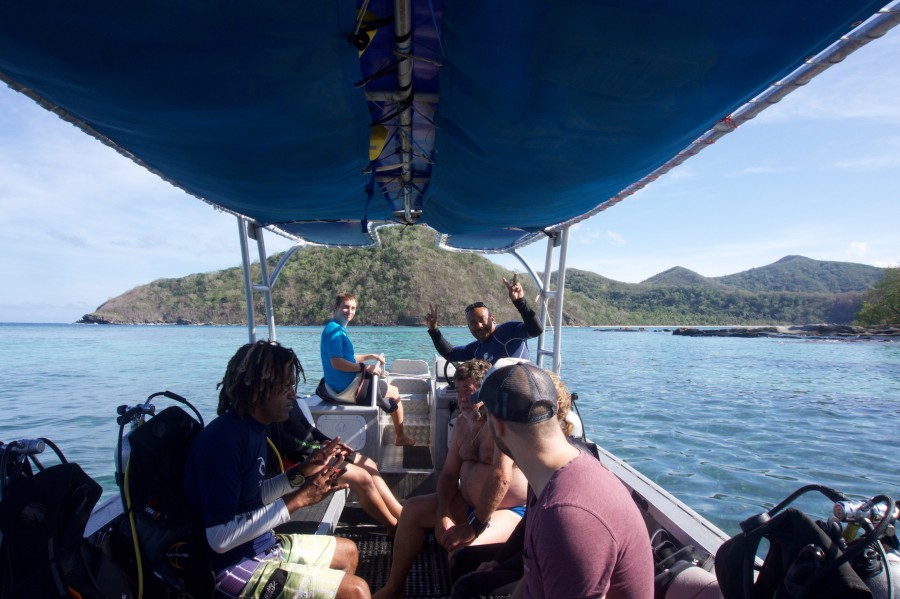
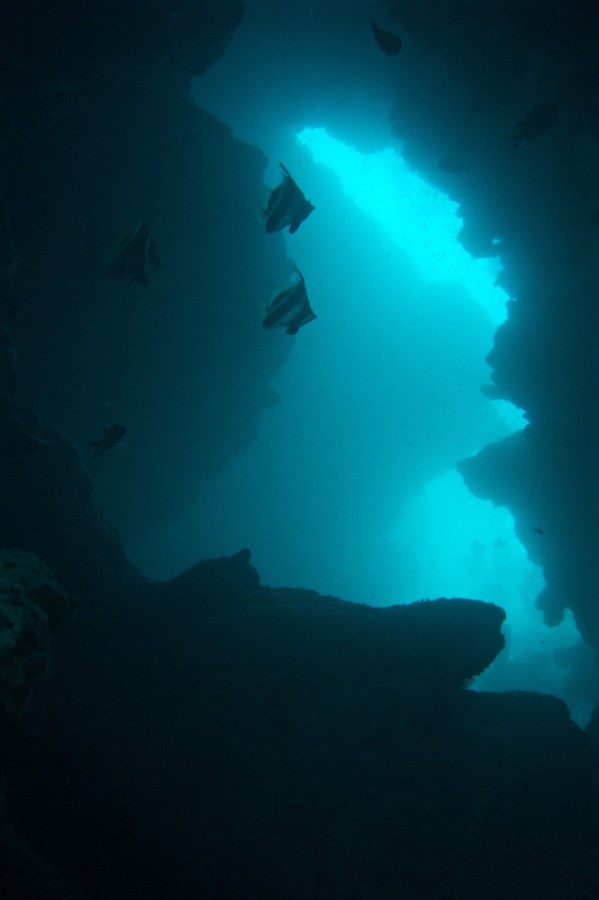
It was an enjoyable dive to start the morning and after lunch, I grabbed my camera and snorkel gear and did a solo snorkel off of sunrise beach. The house reef is absolutely stunning and I snapped away with my camera, managing to get some good shots of the vividly colorful life underneath the clear blue waters.
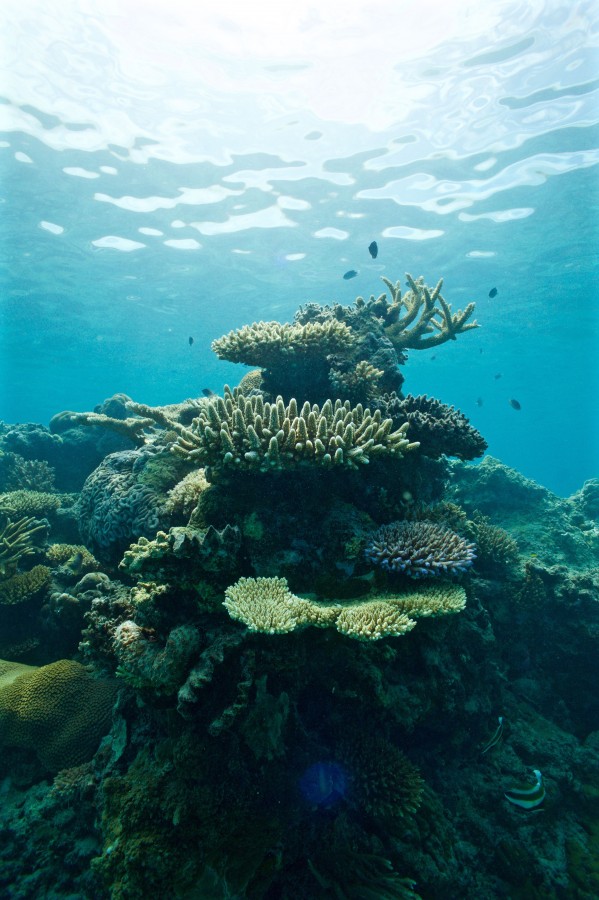
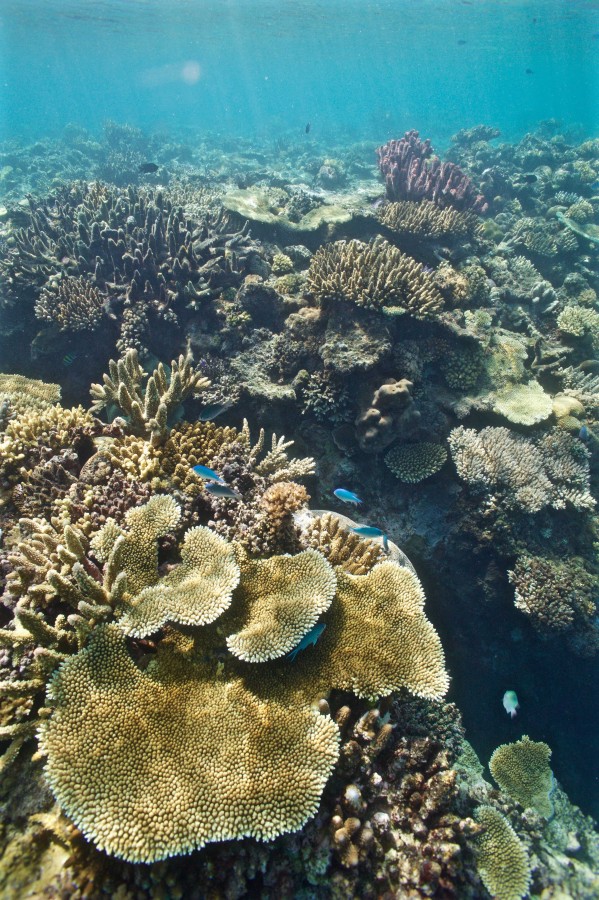
After an hour or so of swimming, I went back to the shop where I was promptly asked by Paul if I wanted to join a guided snorkel on the backside of the island. Since I was already ready to go, I said sure and hopped in the boat with the other guests.
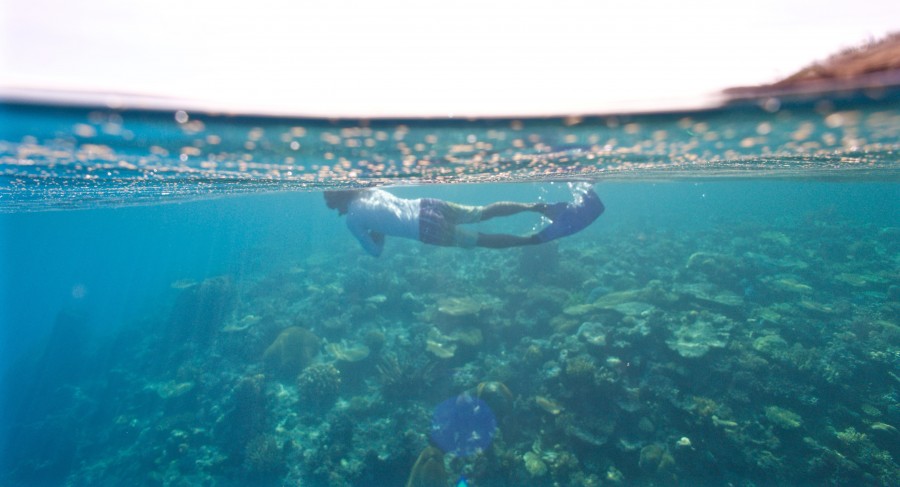
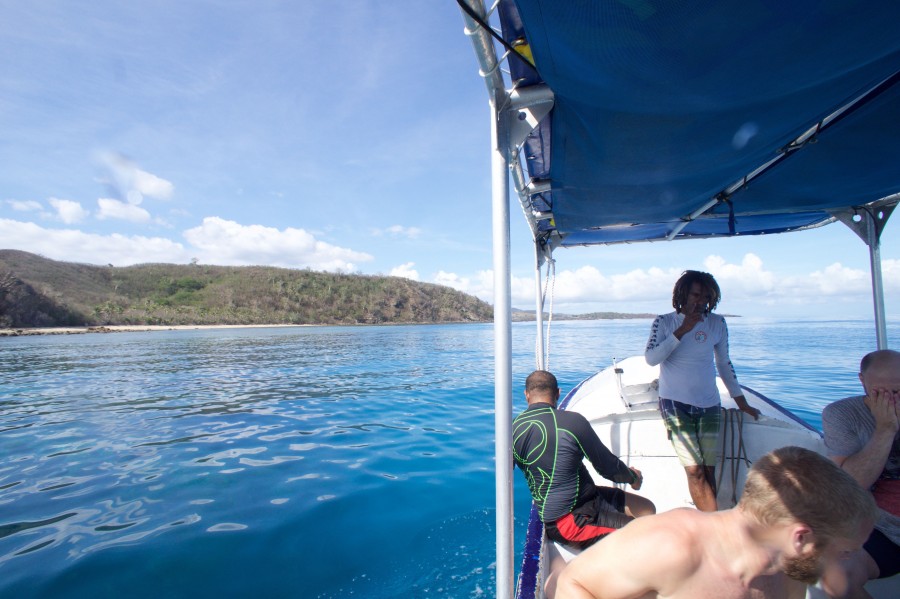
It was another fun hour or so snorkeling around the reef. Upon getting back to the shop from the snorkel, one of the instructors named Semi asked if I wanted to join him on a night dive later on. I couldn’t say no! I postponed my dinner and tagged along on the dive, as there are always new things to be found at night. It was fun to explore the same reef in the dark and we found several unusual critters hanging out. Sunday, the day off, turned out to be the busiest day I had all week at Barefoot Manta and I loved every minute of it!

Monday was my last full day at Barefoot Manta and I was amazed at how quickly my time in Fiji was coming to an end. The morning was spent doing clam cleaning just off sunrise beach. My time had come full circle as my first and last day were spent doing the same things! It was remarkable how much algae the clams accumulated in just one week and after we finished our task we took a few moments to fin around and check out a small sunken boat.
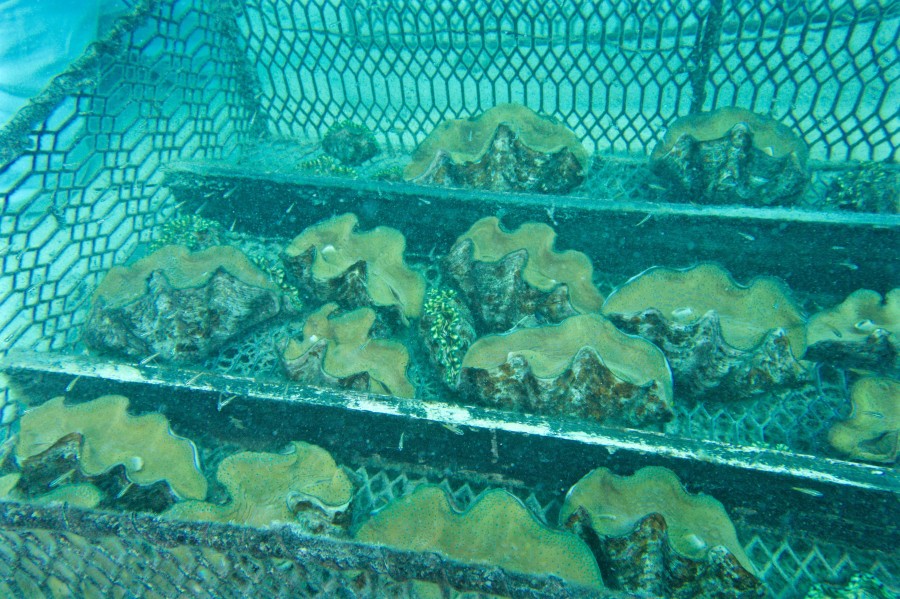
After lunch, we did another COT removal dive at Botaira, because we had such a successful dive a few days before. It was my last chance to kill a few COTS before I left and I nabbed as many as I could, stuffing my burlap bag as full as I could get it. I cruised around like a mad woman, checking every nook and cranny I saw for the tell-tale spines of the COTS. Once my bag was full, I surfaced and was picked up by the boat.
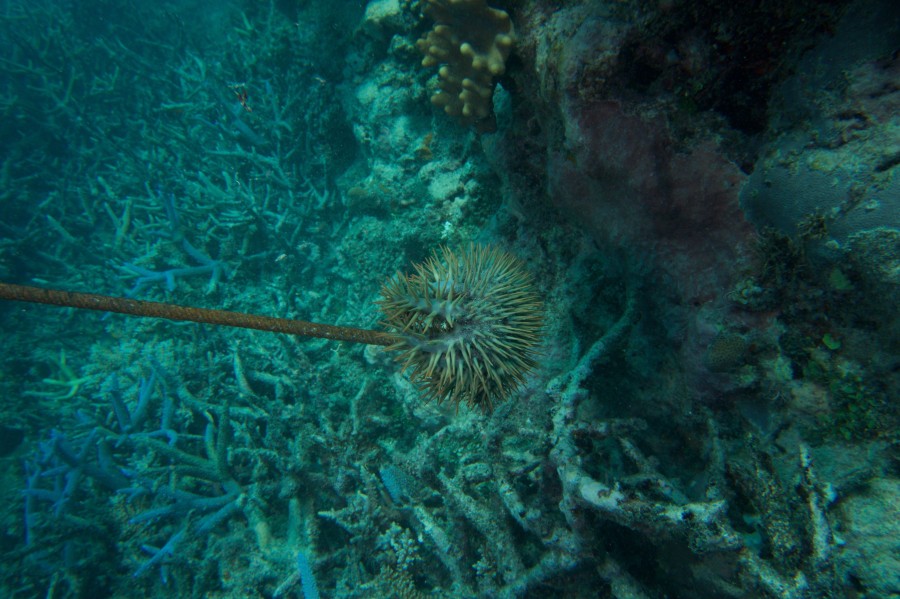

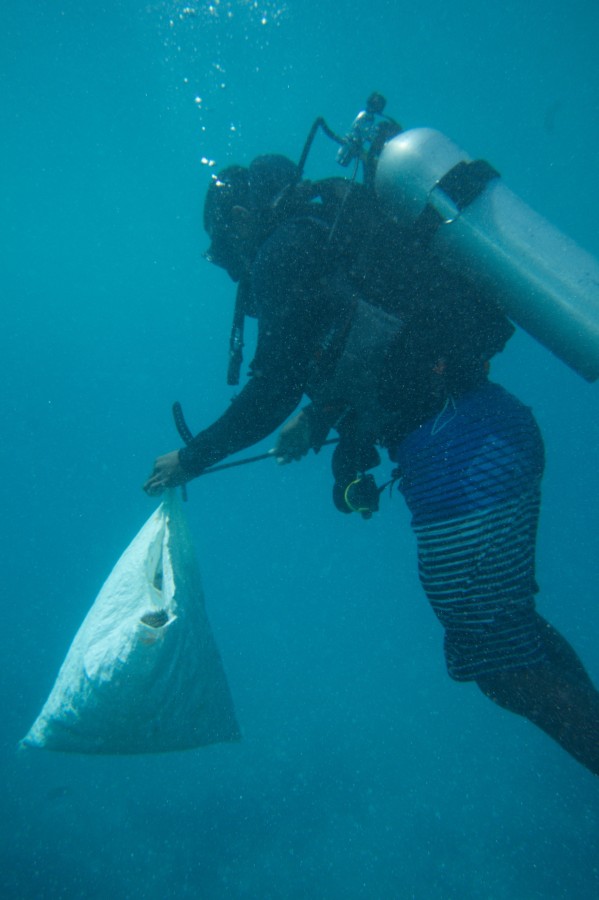
Much to everyone’s chagrin, the boat decided to stop working just as we all loaded up and were ready to head back to the shop. After many noble attempts from Lai and Semmy to get the engine going, we decided to radio the shop and get someone to tow us back. Having worked on a remote island, I was very familiar with boats breaking down unexpectedly and understood that sometimes these things just happen. We settled down to wait for Ben to arrive on another boat to tow us back to Barefoot and had quite a few silly moments while waiting. Ben showed up and we tied off the small boat to his bigger boat and began the slow ride back to Barefoot, making it back all in one piece. I couldn’t believe that just like that, my diving was done at Barefoot and by the same time the next day, I’d be headed back to Nadi to catch my flight back to the states.
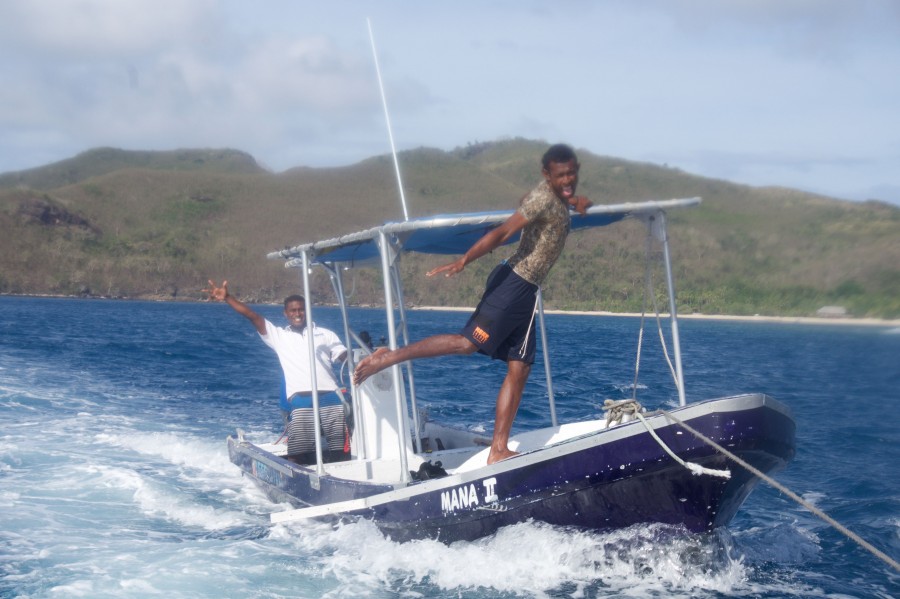
Tuesday I woke up early to catch my last sunrise on the island, then packed my bags and checked out of my bure. I was quite sad to leave Barefoot Manta, as I had quickly become fast friends with the staff on island and thoroughly enjoyed going the whole week without shoes (Barefoot Manta certainly lived up to its name for me). I had a long day of travel ahead, with a 3 hour boat ride to Port Denarau, a bus ride to the airport, and 3 flights to go from Nadi to Orlando, all so I could be in Florida in time for DEMA!
